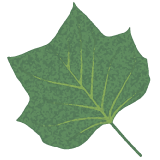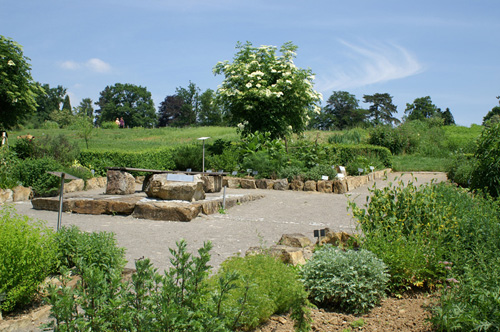 The medicinal plant garden of Hildegard of Bingen
The medicinal plant garden of Hildegard of Bingen
The famous abbess Hildegard of Bingen (1098-1179) left next to her theological writings also two medicinal-scientific descriptions behind, namely the “liber simplicis medicinae” later called “Physica”, and the “liber compositae medicinis”, later known under the name “Causae et curae”.
In these writings medicinal and therapeutic indications and clues are described, that obviously stem mostly from personal observations.
In our medicinal plant garden of the abbess Hildegard of Bingen around 100 of her used medicinal plants are shown.
In those days the observation of the effectiveness of a drug was one side, the other side was the doctrine of signature, which said, that a drug with a certain look possesses a certain effectiveness: Lungwort, of which the leaves look like parts of the lung, is efficient against sufferings of the lung, or the stinging thistle is efficient against stings of the heart.
Finally behind all this stood the conception of the unity of the effectiveness of a drug and the religious ultimate truths. Observation, mysticism and speculation were after all especially for the medicinal plants interwoven. With this the high value of the then reliable observations should not be diminished.
The geographic origin of the plants of Hildegard von Bingen, show clearly, how well already in those days large areas of the Old World were connected with each other.
Interesting literature to read:
Fellmeth, U. (2006) (Hrsg.): Hildegard von Bingen und der Hohenheimer Heilpflanzengarten. Begleitbuch zur gleichnamigen Ausstellung. Hohenheim. ISBN 3-923107-35-8.
 View of the medicinal plant garden of HvB. Photo: Sonja Volk
View of the medicinal plant garden of HvB. Photo: Sonja Volk| Geographic origins of the plants, that Hildegard v. Bingen chose. | |
|---|---|
| Origin | percentage |
| Indigenous | 46 % |
| South European | 24 % |
| Ancient Near East | 17 % |
| South- and east Asian | 8 % |
| Chinese | 2 % |
| East European | 1 % |
| Central Asian | 1 % |
| African | 1 % |
